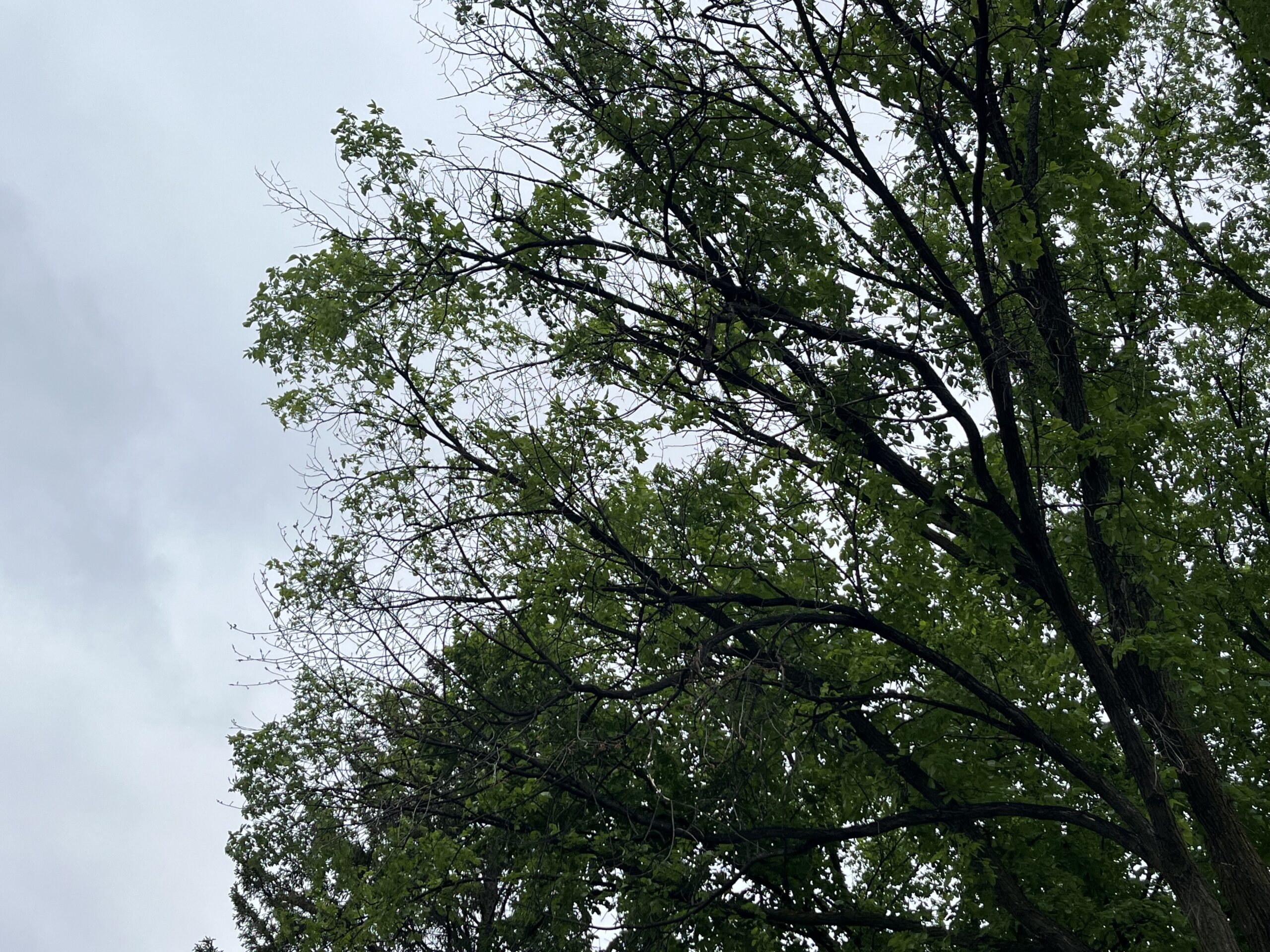Talking Plants
Jillian Patrie | University of Minnesota Yard and Garden Extension
Have you noticed some unusual behavior from trees, shrubs, lawns and other landscape plants recently? Plants across the state are stressed out and are displaying symptoms related to drought and extreme weather patterns. Dieback, slow growth, leaf loss and a variety of other signs can be indications that recent weather events have taken a toll. Let’s talk about how plants react to stress and ways that we can help them cope.
Drought stress has been a common theme for many plants the last few years (2023-present). Summer and winter drought has caused winter injury to lawns, perennials, trees and shrubs. Lawns and perennials may have completely died over the winter and trees may be displaying branch dieback or a decline in leaf emergence. If soil conditions are dry for long periods of time, even well-established plants can begin to struggle. If drought conditions are sustained into the winter months, plant damage can also occur and are more visibly seen in Evergreens. Winter wind and sun can cause winter burn, where Evergreen needles turn brown and start to drop.
Watering during times of drought will help plants make it through the dry spells and provide them with a better chance of survival. Most tree roots live in the top 6-9” of soil, for clay soils, the recommended amount of water is 1” weekly. Watering can take place until the ground freezes, providing plant roots the much-needed soil moisture to make it through a dry winter. Mulching around plants is another way to help keep the root zone moist and cool. To learn more watering tips for gardens and landscapes visit https://extension.umn.edu/how/water-wisely-start-your-own-backyard.
Temperature swings can stress plants out too. Extreme switches can cause plants to react by dropping leaves, seeds, flowers and delaying leaf emergence. Fruit trees are vulnerable to late spring frosts after flower buds have started to emerge. Depending on how low the temperatures dip, flower buds may be killed, which means no fruit for that growing season. High temperatures early in the spring, when trees have yet to fully push out their leaves, can cause plant stress as well. Seeds may drop prematurely, or leaf loss could occur in response. Plants, like humans, have methods to preserve energy and their overall survival which can be triggered by many different factors. In most cases plants can tolerate these situations, but prolonged or consistent events may cause death of even well-established plants.
If you are interested in precipitation forecast models or projected temperature models for the region visit https://hprcc.unl.edu/maps.php?map=ACISClimateMaps.
When plants are stressed, they can become more susceptible to disease and insect pressures. Keeping our landscape plants healthy will prevent many of the above issues and in turn there is less need for corrective action. Nature is a hard thing to control, and plants do die no matter how much we try to keep them going. The good news is, we can try again! For up-to-date yard and garden news visit extension.umn.edu/yard-and-garden.
For questions about this article or local assistance please contact Clay County Extension Educator, Jill Patrie at 218-299-7338 or by email at patri350@umn.edu.


